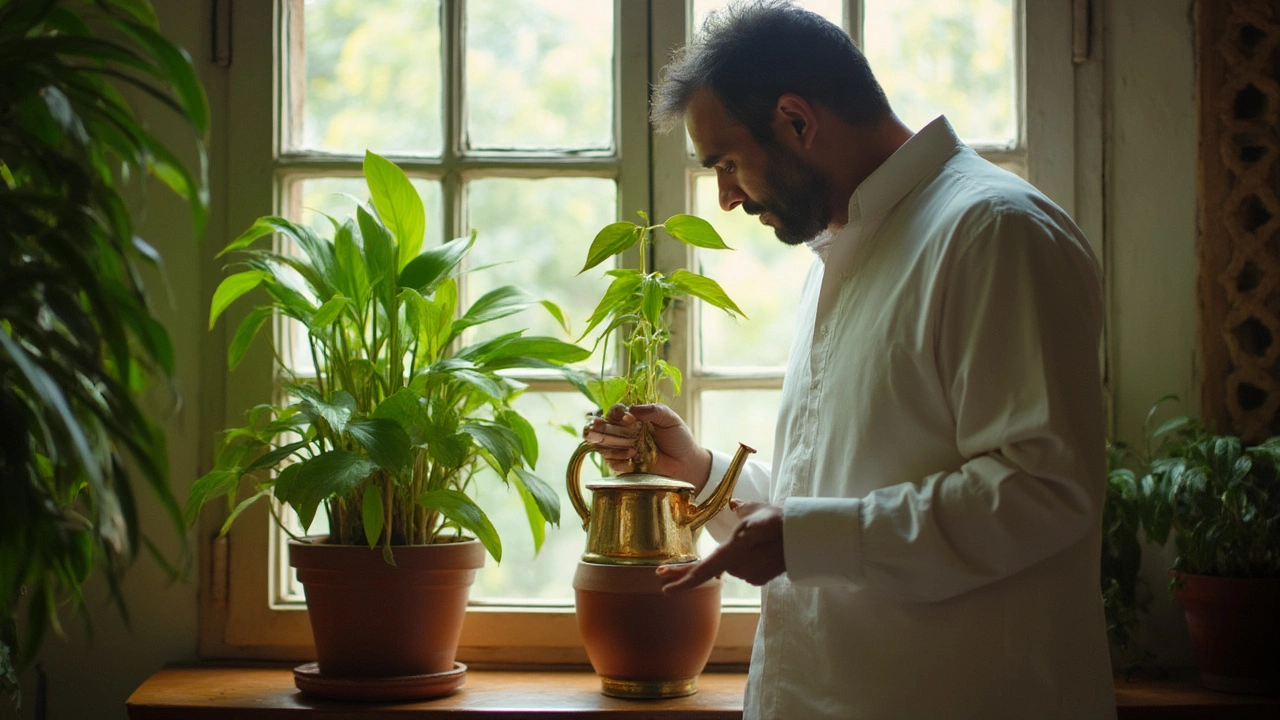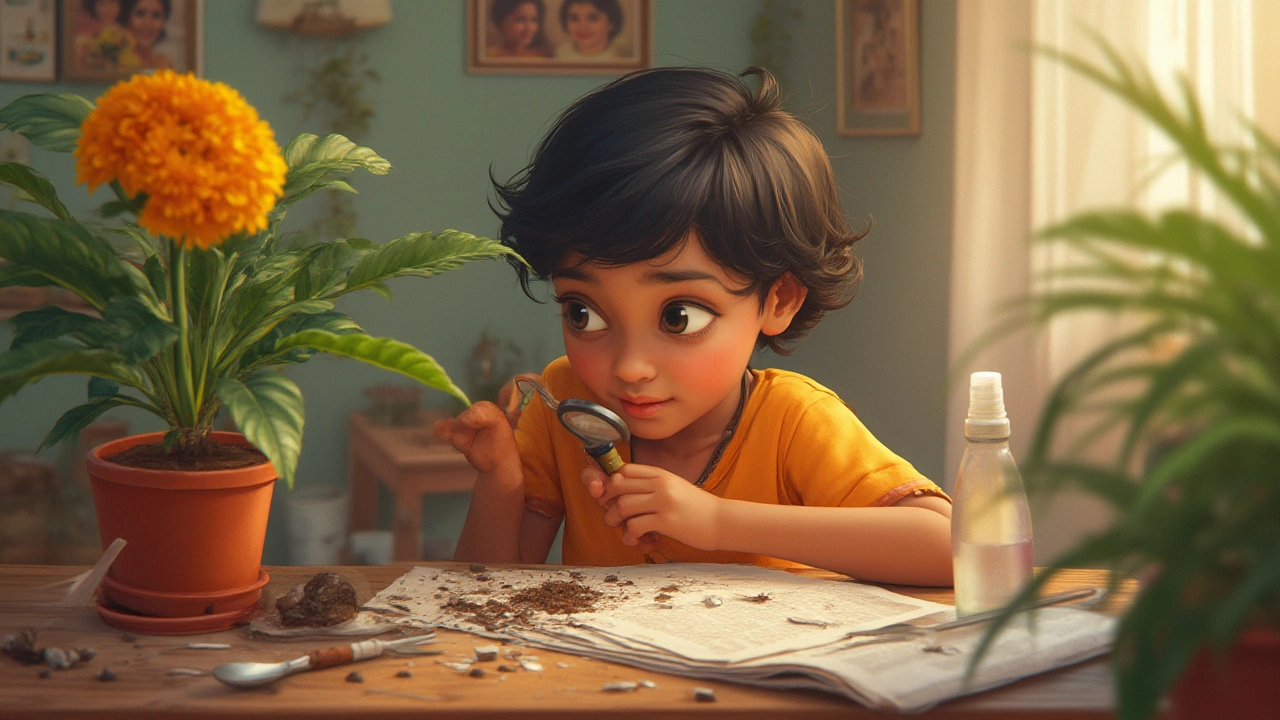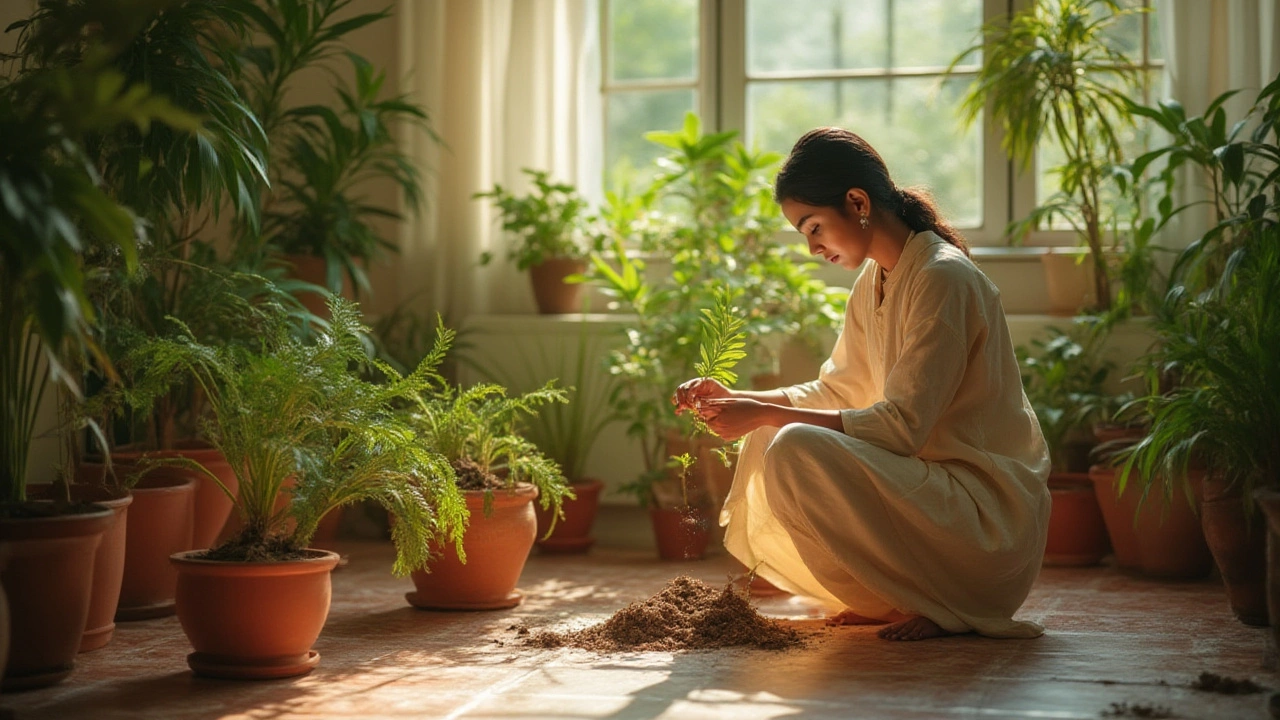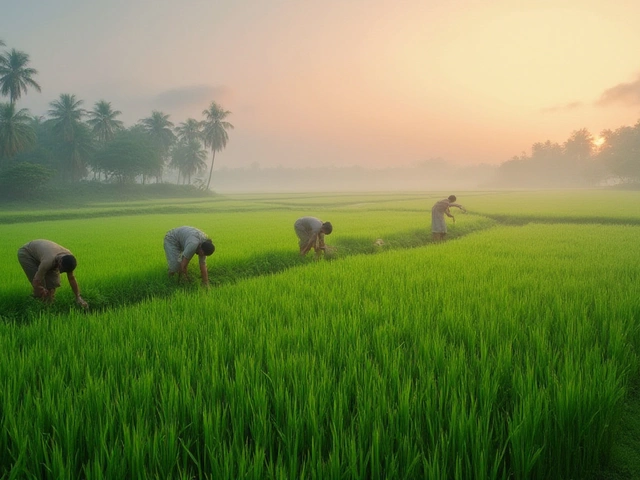Ever walked past your peace lily or fiddle leaf and thought, "When the heck did I water this last?" You’re not alone. Overwatering and underwatering rank as the most common reasons houseplants in New Zealand – and everywhere else – give up the ghost. It’s not just a rookie mistake, either. Even seasoned plant owners get tripped up. Here’s the crazy part: every plant has its own preferences, and the weather’s mood swings can turn a perfectly hydrated plant parched overnight. If you’ve ever found a droopy pothos and panicked, debating whether to add a splash or just leave it, you’re in exactly the right place – because this guide will help you read your plants better than your best mate’s poker face.
Classic Signs Your Houseplant Needs Water
Some plants sulk in silence, while others practically scream for attention. A thirsty houseplant often puts on a show, if you know what to look for. One of the most obvious ways to tell is when leaves start drooping. Now, not every droopy leaf means a crisis; sometimes, plants just chill that way at night. But if your monstera’s gone floppy and stays that way, dehydration is likely the culprit. Some plants get dramatic and let their leaves curl inward – like ferns that roll their fronds, or calatheas folding their intricate leaves. And if those edges start turning brown or crispy, that’s a textbook symptom of underwatering. Yellowing can happen too, but it’s sneakier – too much or too little water can cause it, so context matters.
The weight of the pot is another trick that seasoned plant nerds swear by. Pick it up right after watering, remember that heft, and you’ve got a baseline. When it feels light as a feather, time to check the soil. Speaking of soil: poke your finger in, up to about the second knuckle. Dry? Most plants want water. Wet? Hold off. Bonus tip: never just trust the surface. Sometimes the top dries out, but below it’s wet as a Wellington winter. That’s why sticking your finger in really helps.
Notice the leaves looking dull, limp or lifeless? Water-deprived foliage loses its perkiness. Spotted any wilting? That’s an SOS. Plants try to conserve energy and moisture by sacrificing older leaves first, so don’t be surprised if lower, older leaves give out before the top looks sad. Are your succulents’ leaves wrinkly, not plump? Cacti and succulents store water in their leaves and stems, so wrinkling means they’re dipping into reserves.
If you’re into gadgets, moisture meters are a fun upgrade. They aren’t perfect, but can add peace of mind for plant parents who worry. Color-changing soil stakes? Those are helpful too, especially with deep pots where your finger just doesn’t reach.
Soil Checks: The Real Detective Work
Your plant’s soil is like a diary – it tells you exactly what’s been going on if you look close enough. Dry soil pulls away from the pot's edges, shrinking like a two-sizes-too-small sweater. That gap means water will run straight down, missing the roots. To fix this, try bottom watering. Place the pot in a tray of water and let it soak up from the roots. It’s like a spa day for plants.
Next up, the finger test isn’t just for humans being nosy. Gently dig in. Most indoor plants – think fiddle leaf figs, spider plants, or pothos – like their top two centimeters dry before the next watering. But for moisture-lovers like ferns or peace lilies, just the top centimeter should go dry. Got a big, deep planter? Probe deeper. Sometimes, the top drys out while roots are still sipping below.
Houseplant newbies sometimes mistake hard, compacted soil as a sign to water more. Not true. If poking in feels like bricklaying, the mix might be too packed to drain or absorb water well. Time to fluff it up (gently!) or even repot. Mixing in some perlite or bark chips makes for happier roots, because proper drainage means water goes where it’s needed – and not pooling at the bottom, where roots rot.
A fresh, healthy soil should smell like, well, earth – not mildew. If your potting mix smells funky, you might have a drainage issue. Stop and check for sogginess. Roots that sit wet too long won’t just thirst, they’ll drown. When in doubt, tip out the plant and peek at the root ball. White roots are healthy and thirsty. Brown, squishy ones spell trouble. A quick rinse under gentle water and a repot in airy mix can sometimes save the day.
Still on the fence? Try the chopstick method. Stick a clean chopstick deep into the soil and leave it for five minutes. If it comes out clean and dry, water’s a go. If it looks muddy, wait it out. This is especially handy for crowded pots or dense mixes, like those used with rubber plants or ZZ plants.

Plant-Specific Clues: Different Green, Different Needs
If all plants were as easy as snake plants, the world would be a jungle. But no, each species plays by its own rules. Succulents and cacti come from unforgiving deserts, so they want soil bone dry before their next drink. Overwatering is their nightmare. On the opposite end, peace lilies and calatheas are rainforest natives – they thrive with a bit of steady moisture and humidity. Water only when their topsoil begins to dry out, and if they droop, don’t wait too long. Then there’s the drama queen of the plant world – the fiddle leaf fig. Too little, the leaves flop. Too much, they turn brown at the edges. For these, consistency is everything: water when the top 2-3cm is dry, and keep the pot in a spot with decent airflow.
Aloe vera and jade plants work best with a soak-and-dry method. Drench the soil until water runs out, then wait until it’s Sahara-like before touching the watering can again. Ferns and fittonias, though, hate drying out. They sulk and droop, but perk right up with a drink. Monsteras are forgiving as long as you let the top layer dry before watering, and their split leaves don’t like soggy roots.
Some houseplants, like orchids and air plants, don’t even live in normal soil. Orchids prefer bark or sphagnum moss, which dries out faster. If your orchid roots go silver, they need water; if bright green and plump, they’re happy. Air plants? Just dunk them in water for 20 minutes every week or so. They’ll thank you with glossy, firm leaves.
Know your plant’s story. Are you looking after an indoor palm or a hardy dracaena? Palms love even watering; dracaena likes to dry out a bit. Never water on a rigid schedule. Auckland gets humid, and central heating in winter dries everything out, making plants thirsty faster. Always match your routine to your plant and your room’s mood. The Auckland climate, with its high humidity and mild seasons, actually means your watering needs could shift month to month.
Common Watering Mistakes (And How to Dodge Them)
If there’s one thing plant collectors in Auckland – and everywhere else – mess up, it’s thinking more water equals more love. Overwatering’s number one sign is yellowing leaves, sometimes with black soft spots (think: pothos turning from hero to zero). Water accumulates at the root zone, suffocating roots and making fungus party central. If you see fungus gnats hovering, you’re probably overdoing it. Other times, folks set up a watering schedule that ignores their plant’s real needs. Being rigid – watering every Sunday, rain or shine – is a disaster waiting to happen. Light, temperature, seasons, even the plant’s growth stage all change how much H2O it needs.
Using pots without drainage holes is another classic fail. No pathway for water to escape is like putting your plant on a slow path to drowning. Always choose pots with drainage, or at the very least, add a generous layer of coarse gravel or broken pottery at the bottom. Water will pool otherwise, and those roots will protest.
Another mistake? Only wetting the middle of the pot. Roots spread everywhere, so always water evenly around the plant base. And don’t stop watering the second you see drips from the bottom. Let it flow, but dump the water from the saucer ten minutes later so roots don’t sit soggy. If you’re using a mister, remember: misting alone isn’t watering. It boosts humidity (great for some plants) but won’t rehydrate dry roots. The same goes for light sprinkles; your plant’s roots often go deeper than you think.
Temperature matters too. Cold tap water, straight from the kitchen, can shock roots – especially in winter. Let water stand for a bit and come to room temperature. Auckland’s tap water is fine for most, but if you see leaf tips browning, especially on delicate specimens, consider collecting rainwater or using filtered water for sensitive varieties like Calatheas and Marantas.

Tried-and-True Watering Tips from Plant Lovers
Experience teaches what books and guides can’t. Many seasoned houseplant keepers wait for a few leaves to just start drooping before giving a full, deep water. That way, the plant gets a workout: roots spread in search of moisture, leading to a stronger plant. Watering deeply but less often encourages resilience. But don’t go too long – most tropicals want it before they reach a full flopped-over state.
If your plant sits near a heater, heat pump, or drafty window, check it more often. Hot spots can dry soil fast. Conversely, in cool, dim corners, plants barely drink at all. That’s where overwatering sneaks up on you. In Auckland’s mild winters, heaters and drier air mean you need to check plants twice as carefully.
Grouping humidity lovers together helps, too. Plants release water from leaves, so bunching them creates a little microclimate where soil stays moist longer. Just don’t overcrowd – give each one breathing room. For super thirsty specimens, use self-watering pots or set reminders to check moisture. If you’re always forgetting, apps like Planta or PictureThis can help, but nothing beats the old-fashioned finger test.
Finally, always water around the outside edge of the rootball, not just over the stem. It helps roots spread wide, not just grow straight down. If you travel or life gets busy, try bottom watering before you leave: soak the pot in a basin, then drain. Your plants will usually stay hydrated an extra week.
And don’t forget, sometimes less is more. Trust the signs: soil, leaves, smell and weight. They’re your plant’s way of messaging you.




